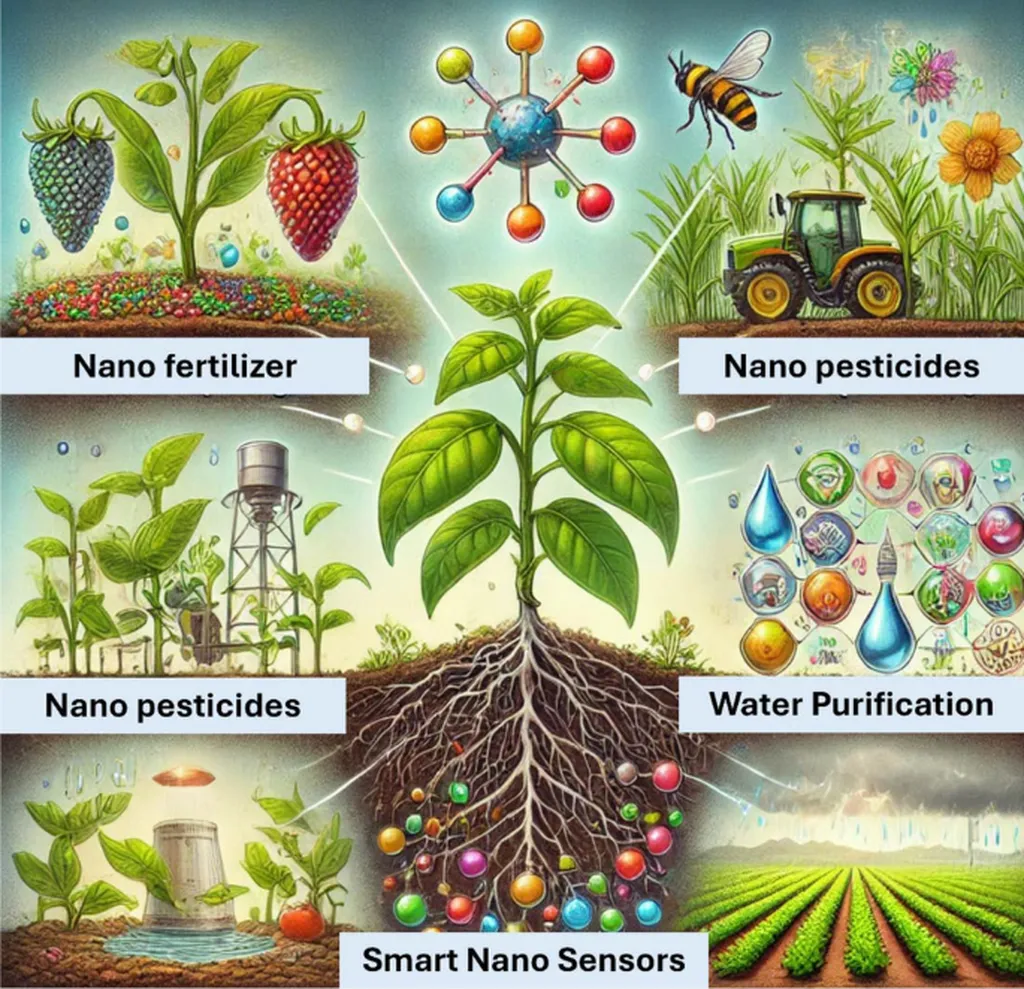In the face of global soil degradation, a new review published in the *Journal of the Saudi Society of Agricultural Sciences* offers a glimmer of hope, highlighting the transformative potential of nanotechnology in restoring soil health and fertility. Led by Mohammad Yaseen from the Faculty of Agricultural Sciences at GLA University, the research delves into the innovative use of nanomaterials to address the pressing challenges of heavy metal contamination, organic pollutants, and declining nutrient efficiency in agricultural soils.
The study underscores the unique properties of nanomaterials, such as their high surface-area-to-volume ratios and increased reactivity, which make them particularly effective for soil remediation. “Nanomaterials can adsorb and degrade pollutants through redox interactions and photocatalysis, offering a promising solution for contaminated soils,” Yaseen explains. The review examines various nanomaterials, including metal-based ones like FeO₄ and ZnO, carbon-based materials such as graphene oxide and carbon nanotubes, and natural polymeric composites, each with distinct advantages for soil remediation.
Beyond remediation, the research explores the potential of nano-fertilizers and nano-bioformulations to enhance soil microbial activity and improve nutrient-use efficiency. These advancements could significantly reduce nutrient losses and boost agricultural productivity, addressing critical food security concerns. “Nano-fertilizers can provide controlled release of nutrients, ensuring that crops receive the right amount at the right time, which can lead to substantial improvements in yield and quality,” Yaseen notes.
However, the path to widespread adoption is not without challenges. The review highlights concerns about field-level scalability, ecological hazards, regulatory ambiguities, and the potential toxicity of nanomaterials. Yaseen emphasizes the need for robust risk assessment, policy frameworks, and interdisciplinary collaboration to integrate nanotechnology responsibly with precision agriculture and circular bioeconomy models.
The commercial implications for the agriculture sector are substantial. By enhancing soil health and fertility, nanotechnology could revolutionize farming practices, leading to more sustainable and productive agricultural systems. This could translate into significant economic benefits, including increased crop yields, reduced input costs, and improved market competitiveness for farmers.
As the global agricultural community grapples with the impacts of climate change and intensive farming practices, the insights from this research offer a roadmap for leveraging nanotechnology to achieve sustainable agricultural intensification. The study not only promotes eco-innovative and field-validated approaches but also underscores the importance of social acceptance and responsible innovation in shaping the future of agriculture.
With its comprehensive review of current research and identification of key knowledge gaps, this work paves the way for further exploration and development of nanotechnological solutions for soil health. As the agricultural sector continues to evolve, the integration of nanotechnology could play a pivotal role in ensuring food security and sustainability for future generations.

